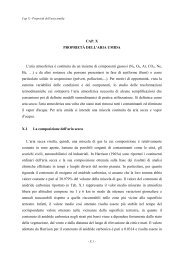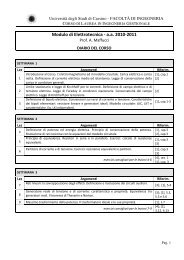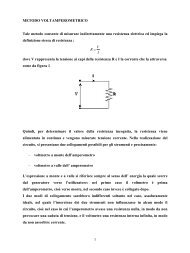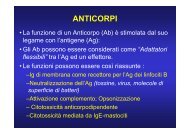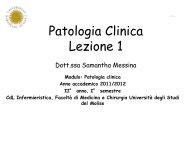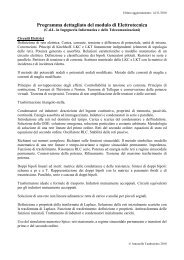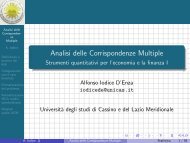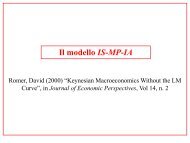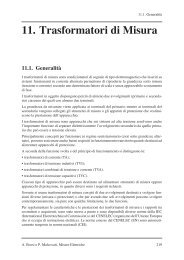Agilent Vector Signal Analysis Basics - Agilent Technologies
Agilent Vector Signal Analysis Basics - Agilent Technologies
Agilent Vector Signal Analysis Basics - Agilent Technologies
Create successful ePaper yourself
Turn your PDF publications into a flip-book with our unique Google optimized e-Paper software.
The final stage of the signal conditioning process is extremely important to a<br />
sampled system and FFT analysis; signal alias protection. The anti-alias filter<br />
performs this function. An analyzer that does not have adequate protection<br />
from aliasing may show frequency components that are not part of the<br />
original signal. The sampling theorem states that if the signal is sampled<br />
at a rate greater than 2 times the highest significant frequency component<br />
present in the signal, the sampled signal can be reconstructed exactly.<br />
The minimum acceptable sample rate is called the Nyquist rate. Thus,<br />
f s > 2 (f max )<br />
where f s = sample rate<br />
f max = highest frequency component<br />
If the sampling theorem is violated, “aliasing” error products can result.<br />
Therefore, to prevent alias products for a given maximum frequency, there<br />
must not be significant signal energy above 1/2 the sample rate. Figure 1-5<br />
shows a set of sample points, which fit two different waveforms. The<br />
higher-frequency waveform violates the sampling theorem. Unless an<br />
anti-alias filter is used, the two frequencies will be indistinguishable when<br />
processed digitally.<br />
To prevent aliasing, two conditions must be satisfied:<br />
1. The input signal to the digitizer/sampler must be band limited. In other<br />
words, there must exist a maximum frequency (f max ) above which no<br />
frequency components are present.<br />
2. The input signal must be sampled at a rate that satisfies the sampling<br />
theorem.<br />
The solution to the aliasing problem seems simple enough. First you select<br />
the maximum frequency (f max ) that the analyzer will measure, then make<br />
sure the sampling frequency (f s ) is twice that frequency. This step satisfies<br />
condition number 2 and makes sure that the analyzer can accurately measure<br />
the frequencies of interest. Next you insert a low-pass filter (an anti-aliasing<br />
filter) to remove all frequencies above f max , thus ensuring that the<br />
measurement will exclude all frequencies except those you are interested<br />
in. This step satisfies condition number 1 and makes sure the signal is<br />
band limited.<br />
Actual<br />
signal<br />
Reconstructed "alias" signal<br />
Unwanted frequency components are<br />
folded onto the spectrum below cutoff.<br />
X(f)<br />
recovered alias<br />
spectrum follows<br />
dashed line.<br />
ADC sample<br />
points<br />
f s ( f s /2)<br />
0 f f f s f<br />
(a) Aliasing in the time-domain<br />
(b) Aliasing in the frequency-domain<br />
Figure 1-5. Aliasing products occur when the signal is undersampled. Undesirable frequencies<br />
appear under the alias of another (baseband) frequency<br />
7





